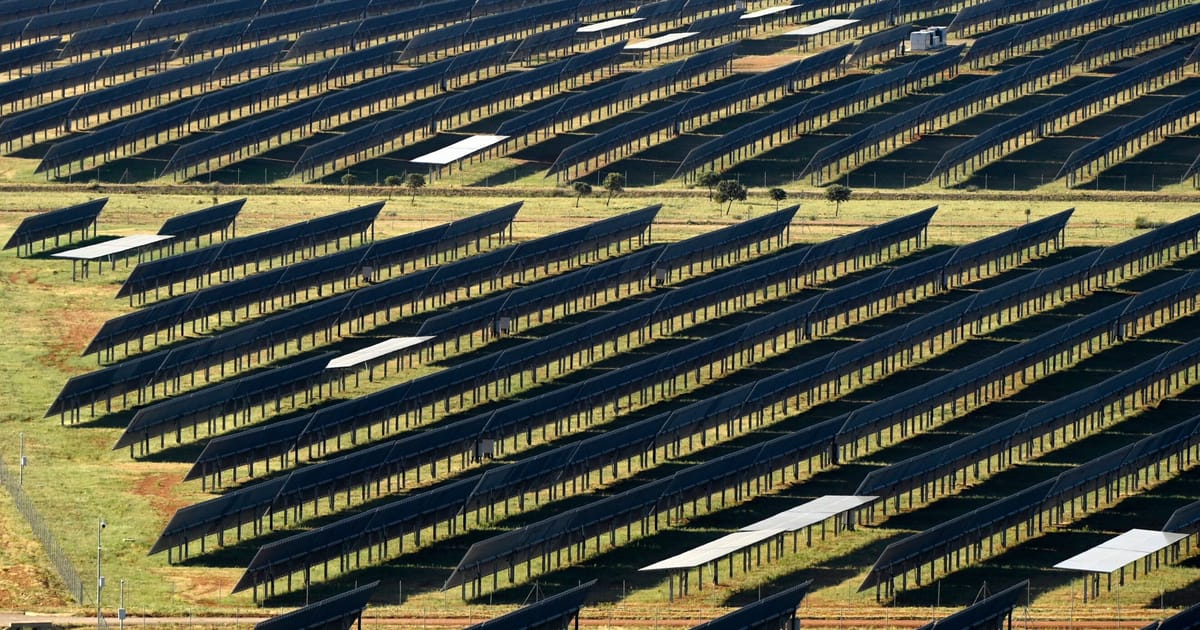Large majority of EU countries will hit 2030 solar targets ahead of schedule, according to new data.
Thanks to Putin who moved solar from „don’t annoy me“ to a „strategic matter.“ Where is shadow, there is light
This part is interesting:
As solar becomes increasingly widespread and electricity prices plummet in the middle of the day when the sun is brightest, some see a risk that the incentive to deploy solar power also decreases, said Esparrago.
That makes grid improvements and the rapid rollout of storage technologies like batteries crucial, experts argue. But the EU is still lagging behind in that area.
I wonder however how far we are from that? There is probably a lot of incentivising that can be done to get people and industry to use this ‘surplus’ daytime energy up surely. Its weird because its usually the opposite with cheap night rates - I know many people who intentionally consume energy overnight instead of the day because its cheaper. Flip that on its head maybe that isn’t as pressing an issue?
The issue isn’t really comparing high noon to midnight. The issue is comparing prices at either high noon (when supply is large) or midnight (when demand is small) to the space in between, especially dinnertime (when demand peaks just as solar supply finishes tailing off). There are ways to move some of that peak into noon (e.g: if homes are well insulated, they can be cooled or heated while solar is still up and used as a thermal battery to at least bridge over to the nighttime hours), but some of the peak is much harder to shift around. If everybody starts cooking and turns on the television around dinnertime, the only way to distribute that is to stagger dinnertime, which is easier said than done for a lot of people’s schedules. Having power storage to bridge that gap (wouldn’t it be nice if everyone that has an electric car got home and used whatever range they had leftover in their battery to absorb their extra demand and then start charging again at nighttime rather than immediately start charging at the worst time of day. Or having solar plants that store excess daytime power in thermal, hydro, or chemical batteries to discharge and increase supply later) is likely easier than convincing enough people to work odd shifts or delay their after work leisure activities
If that’s the case or becomes the case, isn’t it easily solvable since the batteries only need to store the energy for a few hours? Maybe some spinning wheel thing?
It is a very solvable problem, and mechanical or thermal batteries are likely to be at least part of the solution. Of the three kinds of gaps/shortfalls that grid storage would have to cover, the milliseconds-long and hours-long gaps are probably the easiest to solve. The days-long gaps (stretches of cloudy days, low winds for extended periods) is probably the most expensive to solve, but even those are not really that difficult (hydro storage is a tested technology that works well and HVDC transmission linking regions together can allow local shortfalls to be covered by remote surpluses). It’s all more a matter of building capacity than needing new technology to solve an unsolvable problem, from what I understand
Longevity is the big problem. Every practical method of energy storage I can think of is negatively impacted by frequent charge discharge cycles. Even a flywheel like you suggest would eventually need new bearings, need rebalancing, etc…
It would not be nice to power my house with my car. It’s extra wear on the battery, which is basically half the cost of an electric car. It opens me up to potential issues if I need to leave in the evening, my car now has reduced range.
Low power cycling (and powering a house is miniscule draw for a car) below 80% SOC cannot induce enough wear on a car battery to show up at all before calendar aging makes the battery unusable (which is about 10 years after the rest of the car has worn out on average). And the range it reduces is about 10% for an evening of powering a house, leaving more range than the typical ICE has when it is parked with the tank less than half full.
As to the investment. A tesla 3 is $40k and has an 86kWh battery in it (82kWh usable). Modern LFP batteries are rated for 8000 cycles at 0.1C (8kW or about what you can squeeze through a reasonable-sized wire at 240V ). If you somehow manage to wear it out and got 8c/kWh, you’ve made a profit. At 30c/kWh spread that some people pay, that’s tripling your investment.
You can only 50% drain your battery during peak 5-9pm consumption though so this will take 22 years of going full-tilt every day. The other 1.5 cars in each average household won’t get a turn, nor will several of your neighbors because peak electricity consumption is under 8kW per capita pretty much everywhere.
If you are lucky enough to wear out your battery this way, it will pay somewhere between 50% and 300% of the TCO of your car depending on where you live. 5% isn’t a great investment, but it also comes with a free car (and currently up to $8k ofnsubsidies not counted above).
Powering a couple appliances for a few hours is nothing for a car battery, those things are huge and powerful because cars are so inefficient. That’s not to say that V2G or V2X will work perfectly for everybody, but with the average commute around 25 miles and plenty of EVs out there over 200 mile range (which equates to mutliple days of typical electrical usage), there’s certainly some extra capacity. If you were compensated for the power you sold back at peak times, it could help justify paying for and lugging around the kind of battery capacity that is specced for your weekend/holiday road trips just to make your likely shorter daily commute. I’m using you generically, I don’t know your specific situation, so you certainly could be someone who would not feel a need to engage in that kind of scheme
Batteries will hit break-even with the split on peak vs off-peak electricity starting in a year or two.
Current retail consumer batteries (installation consisting of screw it to a wall and plug in three wires if you have a compatible inverter) are at around $280/kWh or 75c per kWh if you use it daily to load shift for one year. About 15c over 5 years. Halve that and anyone buying on peak electricity in a high-price area is going to be very interested in a battery rather than paying the next two quarters’ electricity bills. Quarter it (which is conceivable once sodium ion scales enough to meet utility demand) and average-price areas are looking at it real hard
EVs are hitting $1000/kWh pre-subsidy in the west or $300/kWh in china for the entire car. V2L or V2G becomes very appealing for anyone not using their car during the day.
I wonder what the turnaround time is for some of the more mountainous countries like Switzerland to build out pumped hydro.
Pumped hydro takes really specific geography and destroys an ecosystem to build. You really need a lake, as a river is going to have significant changes in flow from the operation. If you want a green solution pumped hydro isn’t really in the mix.
You don’t need a lake, just a hill or a hole. And the only places without a vast excess of pumped hydro resources have amazing solar and wind resource so don’t need it.
A renewable system with PHES for storage is both viable pretty much everywhere, and significantly cheaper than thermal generation. They likely won’t get built because it’s not really competitive vs batteries for short duration storage, takes a lot of time/coordination, and storage requirements are about an order of magnitude less than the fossil fuel shills are claiming.
Switzerland already has pumped hydro, actually.
A long way away I would guess. People will need more air conditioning during the day. Pretty much need solar on every rooftop to even begin to cover that. By making rates cheaper during the day it means demand will also go up as people run their appliances and charge their cars when rates are cheap.
Once you’ve got a critical mass of productivity online, it’s time for utilities to get out of the business of burning hydrocarbons and selling steady-state electricity- and into the business of capturing daytime surpluses, selling it back to the grid at night
The point, of course, is that there’s never been a shortage of energy- only scarcity of readily-available stored power at a given place or time, sometimes
The excuse always has been that there isn’t one energy storage solution that takes up minimal space, has the same efficiency, requires little maintenance, doesn’t affect the environment, is cheap, and works everywhere. There are tons of solutions that would work but as soon as one of those prerequisites are lacking, the solution is deemed inadequate and we’re back to the slow sacrifice of the environment. Anything short of perfection isn’t enough to be convincing.
Perfection once again being the enemy of improvement.
Meanwhile in Bavaria…
Die Gröööönen
I’d be damned if I don’t upvote a good news the few times I see one





